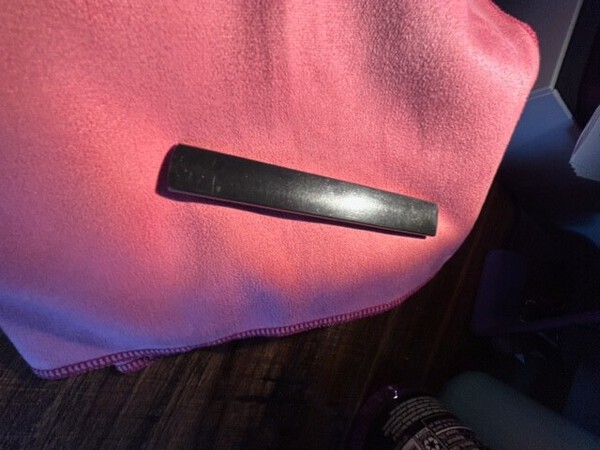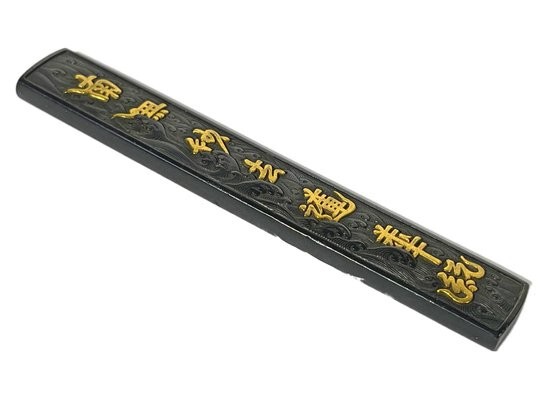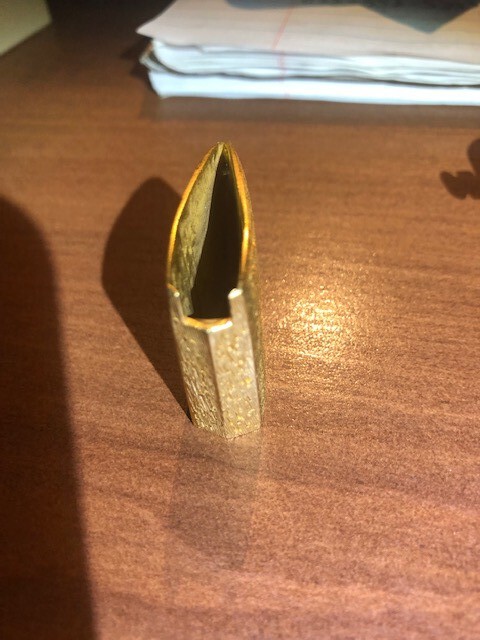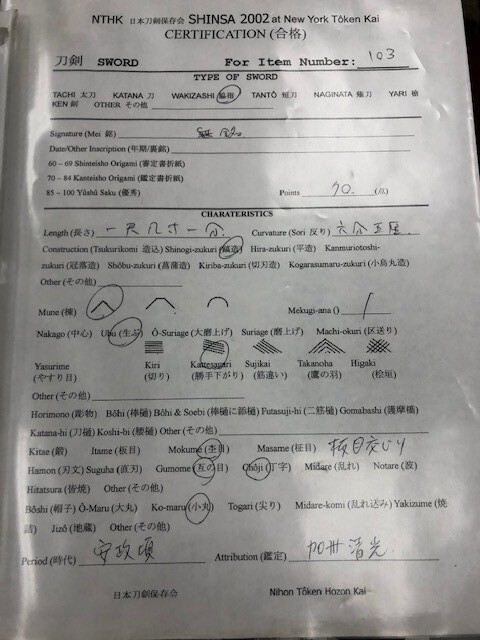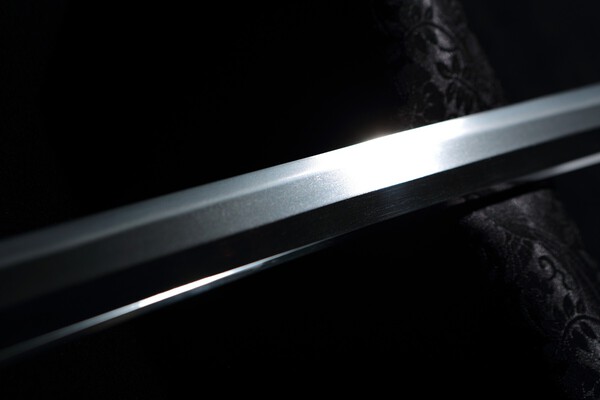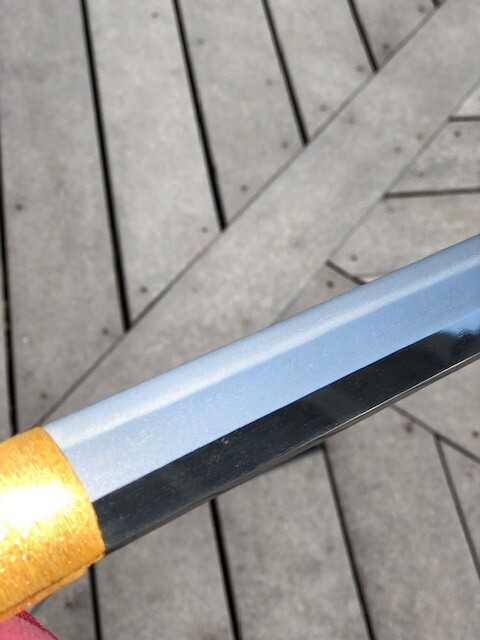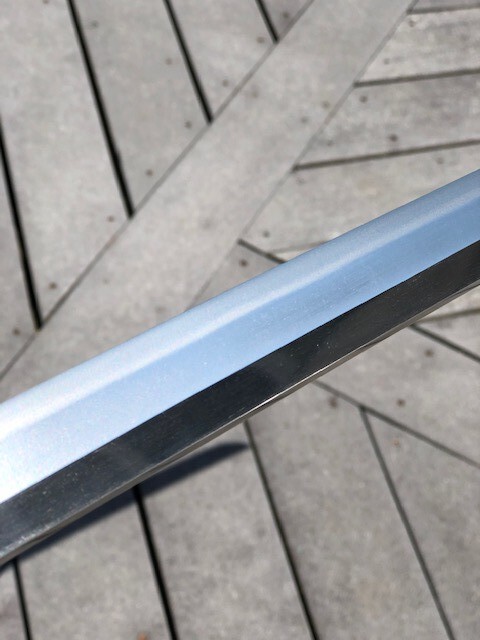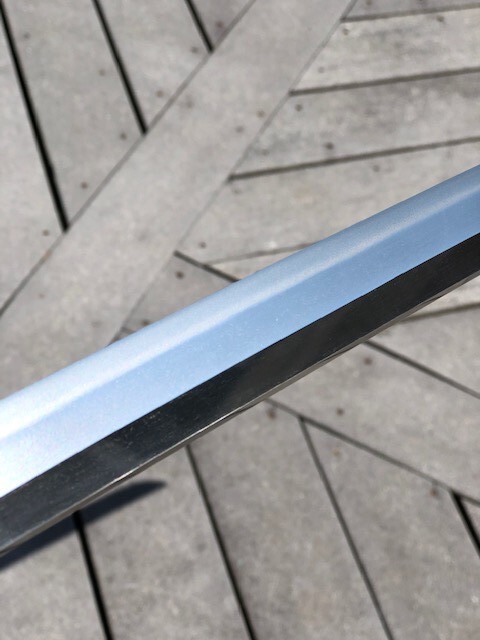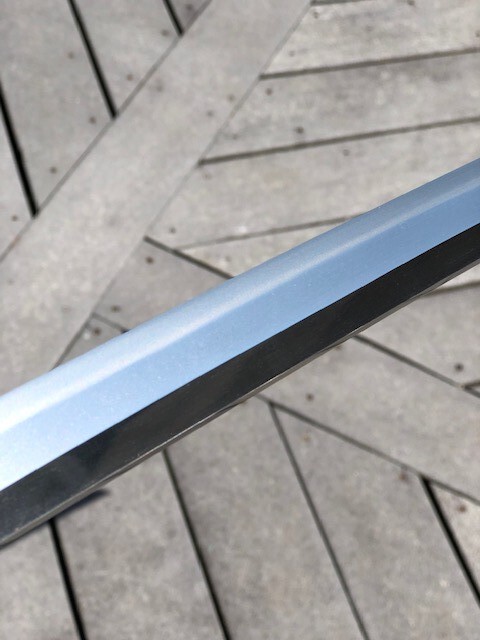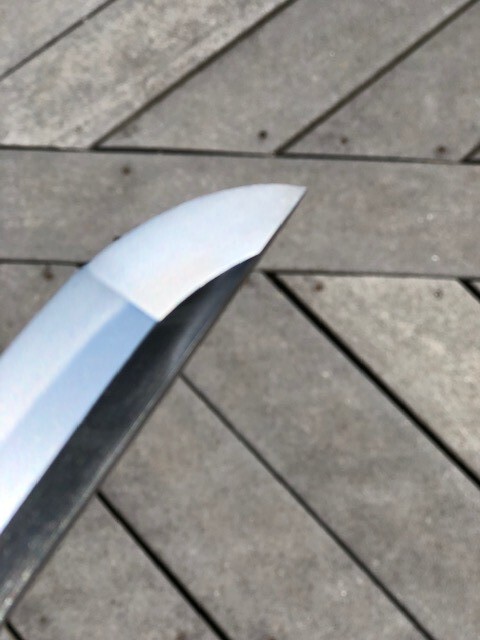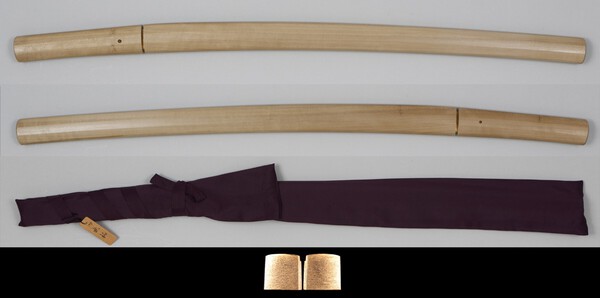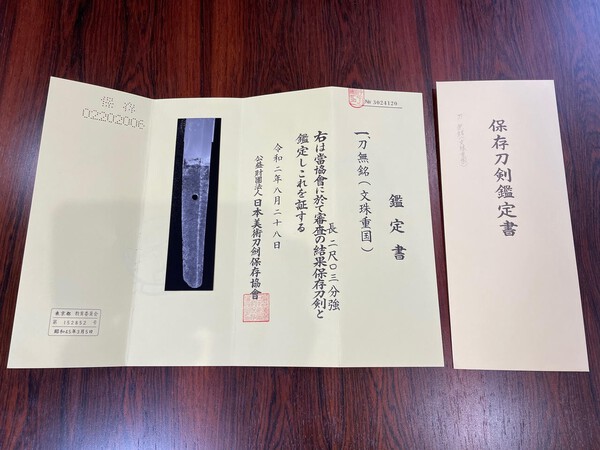
AdamH
Members-
Posts
18 -
Joined
-
Last visited
Content Type
Profiles
Forums
Events
Store
Downloads
Gallery
Everything posted by AdamH
-
-
One thing can be said. The Kozuka opened up a curiosity outside of the item itself. I am not sure if this is "choosing me", but it definitely is leading me down an interesting path.
-
Piers, Its funny you mention this. After you helped with the translation, I did some research on the Lotus Sutra and it sparked some interest. I even purchased a book "Orally Transmitted Teachings" to learn more about Nichiren Buddhism. Nam-myoho-renge-kyo being the focal point of his teachings.
-
I recently came across the below Kozuka at an estate sale, but I know very little about it. I understand that the characters refer to the Buddhist chant - nam myoho renge kyo. I have not seen many Tosogu with the full chant such as this. There are no signatures on this piece, but I was hoping someone could lead me in the right direction. I am interested in selling, but uncertain as to the potential value. The condition and quality seem quite good. Any feedback would be welcomed.
-
Thanks for the quick response. It this a Buddhist prayer?
-
-
Question regarding Gimei signatures & dates
AdamH replied to AdamH's topic in General Nihonto Related Discussion
Very interesting article from Markus Sesko regarding this subject, and even mentions Koyama Munetsugu. Key line in the article that answers some of my questions. Munetsugu made a 1:1 copy of the then condition of the meibutsu, and interesting this time, he also copied the signature of the original 1:1 and signed himself on the back of the tang (see picture 1 right). Please note that this does not come under the category of gimei as the smith added his name at least somewhere on the tang. But even if Munetsugu had not added his name on the back of the tang we would not see this blade as gimei. https://markussesko.com/2015/09/19/copies-homages-and-reinterpretations/ -
Question regarding Gimei signatures & dates
AdamH replied to AdamH's topic in General Nihonto Related Discussion
That is what I was thinking... Could a misjudgement have been made? The nakago looks muromachi, and/or shinto, but I would be fooled if you told me shinshinto. -
Question regarding Gimei signatures & dates
AdamH replied to AdamH's topic in General Nihonto Related Discussion
I really do like the blade, and this potentially brings on another question. These Bizen copies from Koyama Munetsugu, are they interpreted as gimei or honest attribution honoring the original smiths? Does the latter hold significant more value compared to the former? -
Question regarding Gimei signatures & dates
AdamH replied to AdamH's topic in General Nihonto Related Discussion
Rivkin, you are actually right. I was being cautious in the case this could spark additional interest. See link to the sellers page. She also confirmed that she believed it to be a later smith copying a muromachi blade, signature/date and all. https://www.toukenkomachi.com/index_en_tachi&katana_A070922.html -
Question regarding Gimei signatures & dates
AdamH replied to AdamH's topic in General Nihonto Related Discussion
Let me give some context. The below signature shows Bishu Osafune Kiyomitsu and the date Eisho 2nd year August day, which puts this in the Muromachi period. The seller states the sword is was crafted in the ShinShinto period by a smith in the Koyama Munetsugu lineage. From my understanding, this group created Bizen Muromachi style swords. Looking at the nakago, this does not look ShinShinto, and I cant find any Kiyomitsu from the Shinshinto period.. So I was thinking either this was a gimei signed during shinshinto, or the seller is just plainly incorrect. -
Has anyone seen a gimei signature along with forged date on the opposite side of the nakago? Would a forger go so far as to even fake a date? I have only seen examples with just the signature. I am wondering if a date is provided, would that increase the chance that its a valid signature? Also assume that both signature and date look to be written at the same time and not years apart.
-
Other than having the metal tested for its content, is there a way to determine if a habaki is solid gold? Is there a particular design that is common for solid gold? I have the below habaki from a shinto katana I purchased direct from Japan. There was no mention on the material of the habaki. See pics below, and let me know your thoughts.
-
Trying to confirm the signature of this wakizashi. The last kanji looks to be Shige, but cant make out the rest.
-
Hello, Can someone help translate the attribution and period listed at the bottom of this Shinsa sheet? Thanks in advance.
-
Selling my mumei Monju Shigekuni katana. It is believed that this is the 2nd generation whom was active in the Kanbun era (1661-1673). He is rated Jo-saku with wazamono cutting performance (Hawley 90, Toko Taikan 6m) Shinogi-zukuri. Iori-mune, shallow sori. Blade length 61.6cm (2 shaku 0 sun 3 bu 3 rin), sori 1.0cm (3 bu 3 rin), moto-haba 2.86cm, moto-kasane 0.65cm, saki-haba 2.11 cm, saki-kasane 0.44 cm, mekugi-ana(hole) 1, blade weight 606.5g , shirasaya length 87cm Nakago is Ubu. Yasurimes are kiri. Saki is kuri-jiri Jigane : Itame-hada well grained. Mokume and some changes mixed. Jinie attached. Clear chikei appeared. Hamon : Chû-suguha. Senqunenced ko-gunome mixed. Deep nioi appeared. Ko-nie attached. Sunagashis appeared Sword is in polish and in very good condition. The Koi kuchi of the shirasaya is a little tight. NBTHK Hozon Asking $3250 + Shipping and Insurance

